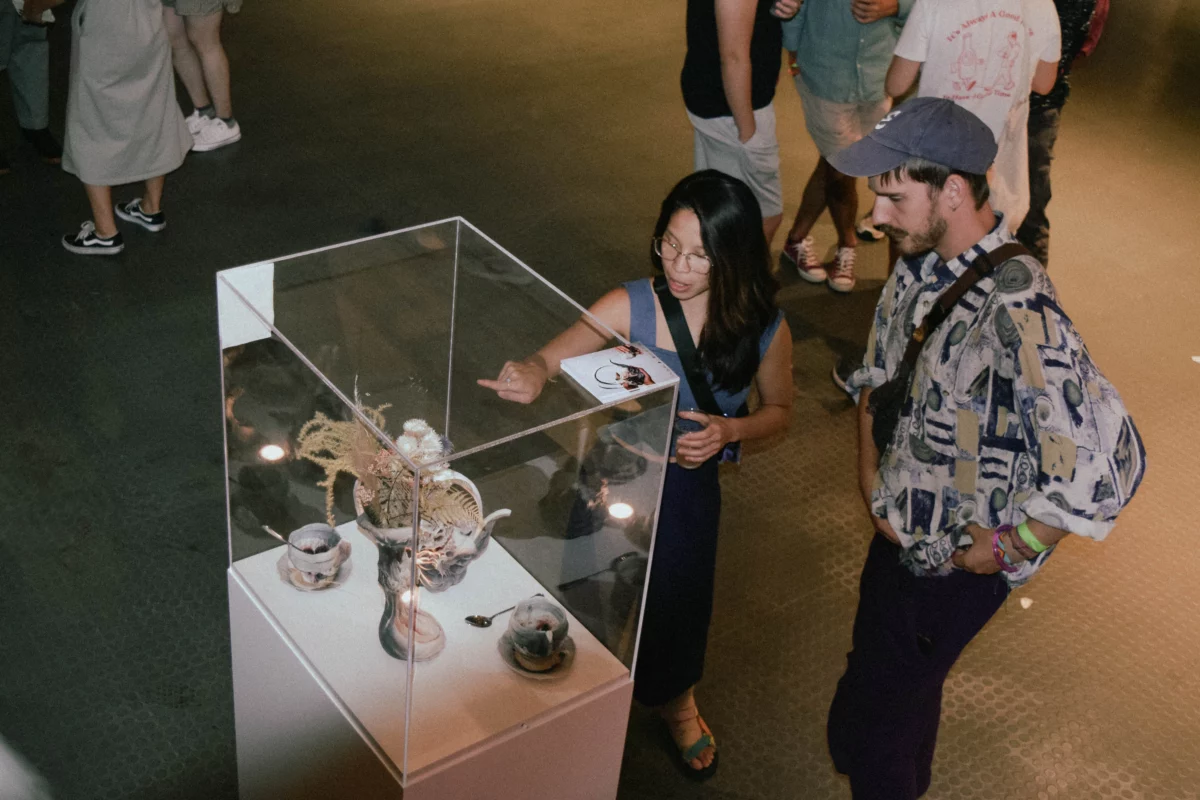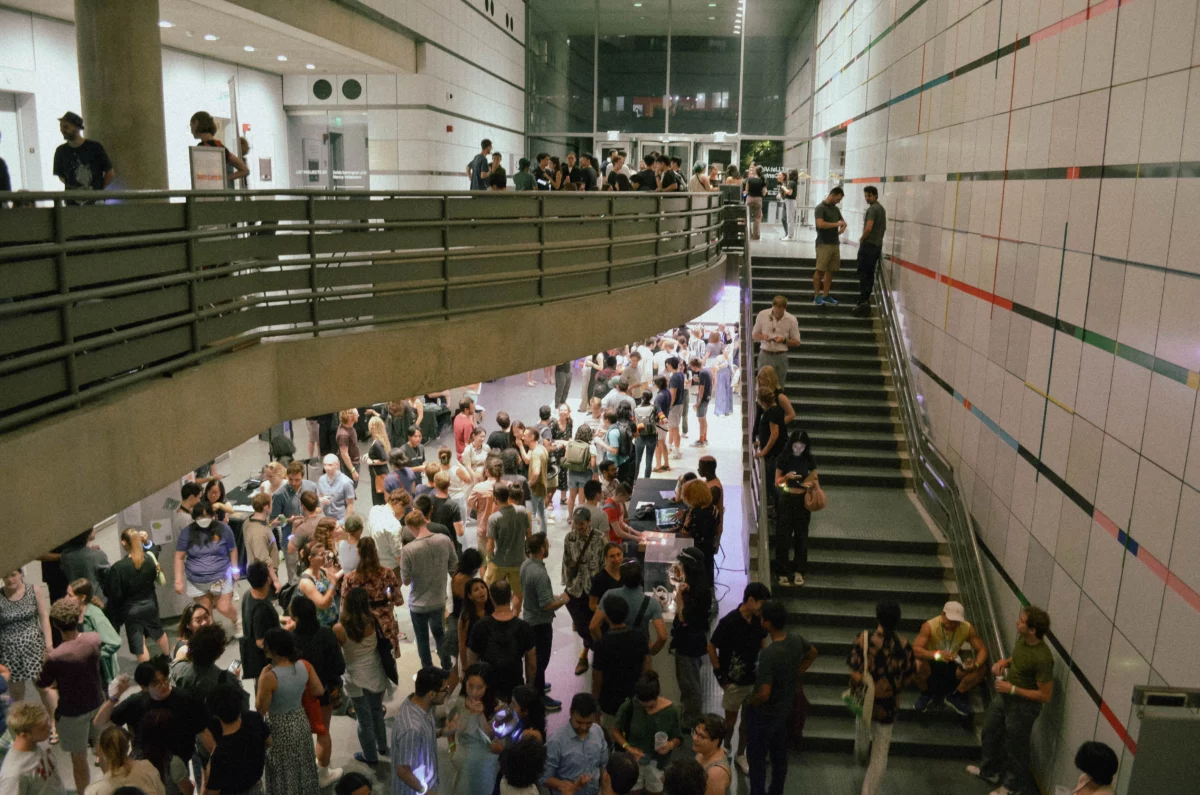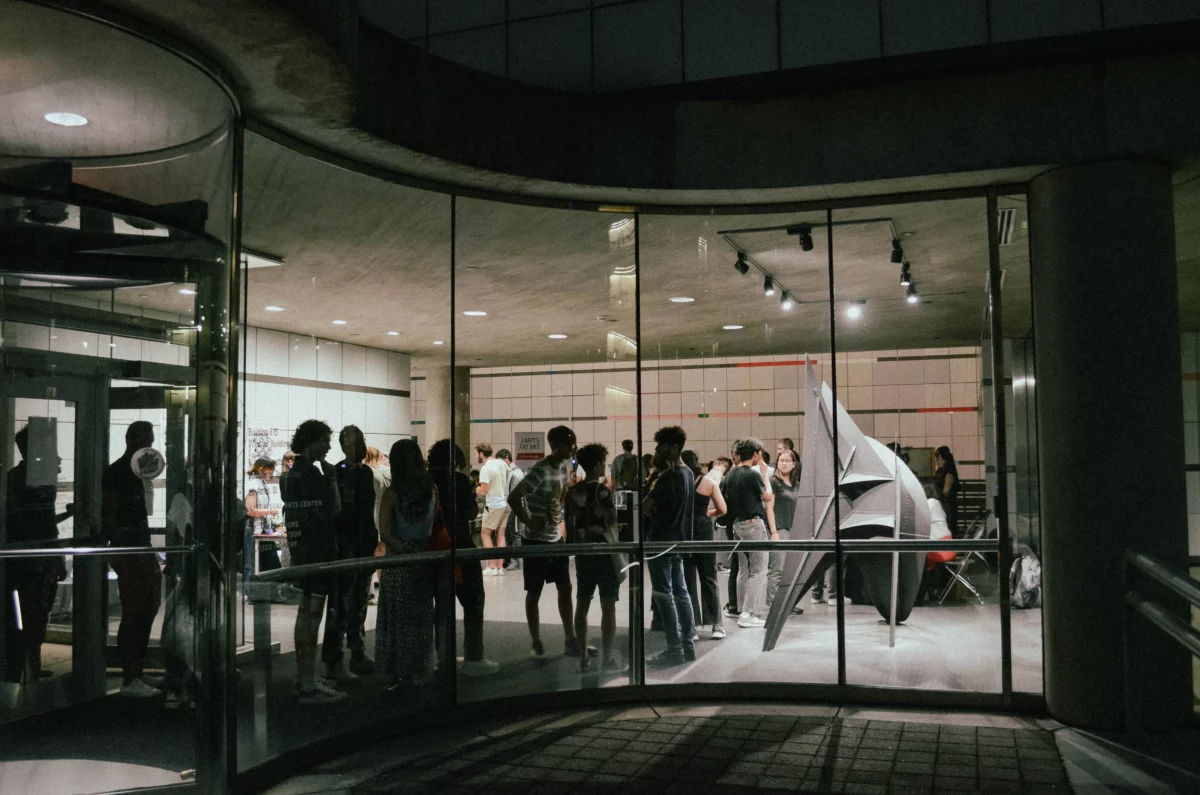Student Voices: Arts on the Radar
By Jessica Kim, MIT undergraduate
A Friday night party like no other, MIT’s “Arts on the Radar” lit up the Wiesner Building (E15) with a dazzling display of creativity. More than 600 arts enthusiasts were transported into a world with interactive student-made artwork, flashing neon lights, and an atmosphere electrified by a dozen creative groups within the institution. In this world, everyone celebrated art, innovation, and the boundless potential that emerged when these disciplines collide. Booths highlighted MIT’s artistic departments and programs, including Music & Theater Arts; Comparative Media Studies & Writing; Architecture; Art, Culture and Technology; and Arts Initiatives. The Spatial Sound Lab booth featured an immersive 360-degree listening environment while the Project Manus and Morningside Academy for Design table had everyone huddling around a do-it-yourself button maker.
The Student Lending Art Program Exhibition at the List Visual Arts Center showcased hundreds of paintings, photographs, prints, and poems by acclaimed contemporary artists. Nearby, fields harrington and Nancy Valladares’s collaborative exhibition was on display, along with an interactive conversation activity that encouraged students to discuss themes such as citizen science, capitalism, and exhaustion. The exhibition showcased various mediums combining sculpture, moving images, and text to explore “overlooked technological and industrial histories.”
The creation of art is often taken to be a solitary endeavor—yet, at Arts on the Radar, creation was communal.

Art as a Community: What It Means to be Human
Indeed, the secret to MIT’s excellence is its collaborative spirit. Many student artworks on display were products of joint effort. Funded in part by a grant from the Council for the Arts at MIT, Valdemar Danry and Cenk Güzelis’ Organs without Bodies models a dining table with teapots, plates, and cutlery generated by a machine learning model. This creation questions “the transformative effect [that] generative artificial intelligence [has] on our most intimate spaces.” While technology such as cutting-edge 3D printing shaped many of the art projects on display, the handcrafted tapestries created by students from the “Foundations in the Arts, Design, and Spatial Practices” course (Spring 2019) revisit the fundamental aspects of our humanity: memory, belonging, and personal growth.
This course, taught by Azra Akšamija, inspired each student to create a “T-Serai” Portable Palace piece, many of which were on display at Arts on the Radar. “Lisabeth Acevedo Ogando’s tapestry of a tulip surrounded by rays of sunlight, visualizes a story about “being able to overcome hardships, transformation, and not losing one’s vitality and vigor.” Alexander Boccon-Gibod sheds light on growing up with Pirot carpets, or ćilims, with his T-serai of a turtle representing “the idea of shelter, specifically portable shelter, […] a portable home away from home which fosters social interaction and discussion.”
In many ways, MIT is that “portable home.” Students here find comfort in having endless opportunities to experience, create, and reflect, often turning to art as a vessel. Some join clubs such as Infinite Magazine or DAAMIT, otherwise known as Digital Art and Animation at MIT. Others explore humanity and community through research in the Media Lab, funded art projects, and conversations with the very approachable arts faculty.

Fusing the arts and technology with the Capaciharp
Joseph Ntaimo, a first-year Master’s student in Course 2, combines his passion for engineering and music in his project Capaciharp, a capacitive instrument that responds to human touch by producing musical notes. In the spring of his senior year as an MIT undergrad, Ntaimo created the Capaciharp in the Digital Instrument Design course taught by Ian Hattwick in the Voxel Lab. “The user plays [the Capaciharp] by touching the string, which changes the capacitance and amplitude of a note and brightness of the [display] LED,” Ntaimo explains. The Capaciharp can play the root note and scale mapped to the string, and users can change the notes across different major scales. In the future, Ntaimo hopes to create a room-sized version of the Capaciharp at MIT.
He muses, “After taking Introduction to Western Music at MIT and DJing parties in East Campus, I really wanted to make technology that moves with the music to make compelling experiences for people.” He has since been involved with MIT’s Symphony Orchestra as a violinist and has taken courses on Harmony and Counterpoint, Reimagining Hyperinstruments, and Interactive Music Systems. “I didn’t know I was going to do so much music at MIT, but it has been such a rich part of my experience.”
Many students share the consensus that the arts at MIT is a hidden gem—one they wished they’d discovered sooner, which is why Arts on the Radar was created, to introduce students to the arts right at the start of the year. As the night culminated in a dance party with MIT DJs, life-sized LED light displays, and more interactive art, “Arts on the Radar” served as a critical reminder of the energy and diversity that MIT’s arts community has to offer.
Written by Jessica Kim, MIT first-year undergraduate
This article is part of the Arts at MIT’s Student Voices series




